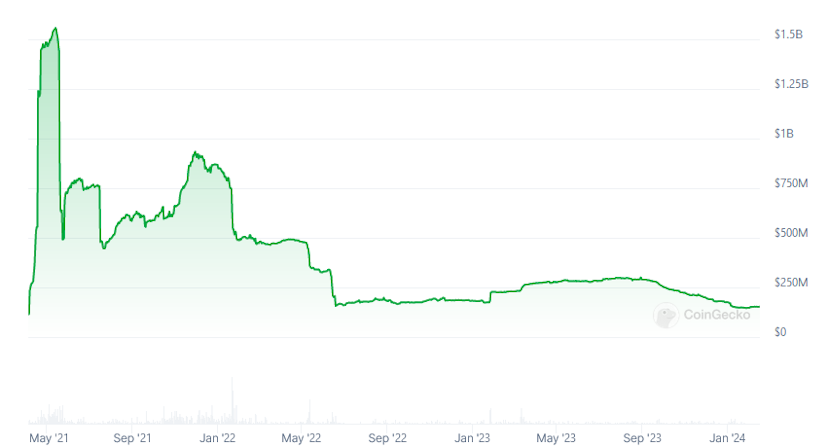Liquity To Launch New CDP Stablecoin Protocol In Late 2024
Liquity to introduce LST support and dynamic user-set interest rates in bid to drive growth.
By: Samuel Haig • Loading...
DeFi
Liquity, the project behind the LUSD decentralized stablecoin, will launch a newly redesigned protocol this year.
On Feb. 15, Liquity announced plans to launch a revamped collateralized debt protocol (CDP) seeking to address the shortcomings encountered by its current offering in recent years.
Liquity’s new protocol will introduce several new features, including support for liquid staking tokens (LSTs) as collateral, and new mechanisms designed to maintain LUSD’s peg to the dollar. Liquity will also debut dynamic “user-set interest rates” alongside a new liquidation system that will prioritize forced redemptions for users paying lower fees.
“We are strongly convinced that the introduction of this new DeFi primitive, centered on user-driven interest rates, not only enhances its direct appeal to users but also opens doors for developers and protocols,” Liquity said. “By choosing higher interest rates, borrowers can reduce the likelihood of being affected by redemptions, thereby aligning their individual incentives with the stablecoin peg dynamics of the system.”
Liquity said that users can protect themselves from liquidation redemptions in the event of heavy selling pressure by increasing borrowing rates. “The resulting higher fee payments serve as direct revenue to the Stability Pool, driving demand for the stablecoin which subsequently helps the stablecoin peg and lowers redemption risk,” it added.
Liquity said it aims to launch the protocol sometime around late Q3 2024.
Liquity's decline
Liquity said its “steadfast commitment” to decentralization has caused issues for the protocol in recent years.
Liquity has been unable to adapt to the evolving macroeconomic landscape driven by interest rate fluctuations, with the team concluding that its algorithmic rate mechanism has not remained competitive within the current economic environment.
Liquity also said its market share has declined as rival protocols introduced support for LSTs, which allow CDP users to earn staking rewards on tokens representing ETH deposits.
“The primary challenge has transitioned from scaling borrowing demand… in an environment with rising interest rates,” Liquity said. “This… has illuminated areas where our current system can improve, and highlighted opportunities for innovation within our codebase.”
While users have taken out more than $4.5B worth of loans from Liquity since its launch, LUSD’s market cap has declined throughout the majority of the protocol’s lifespan.
Launched in April 2021, LUSD sought to address many of the criticisms facing the long-standing incumbent and pioneering CDP, MakerDAO, which had alienated some users by abandoning its original ETH-only backing in favor of supporting an increasing number of highly centralized assets, such as USDC.
Liquity sought to address this by launching a CDP exclusively supporting ETH and decentralizing the protocol to prevent major changes from being made to the protocol in the future.
Just six weeks after launching, LUSD’s market cap had rocketed to an all-time high of nearly $1.56B, before slumping to $445.5M by August 2021, according to CoinGecko. Its market cap then ramped up to $934B as of Nov. 30, 2021, but had steadily fallen to $160M as of June 2022.
LUSD’s capitalization again ramped up alongside rising ETH prices in 2023, but has fallen by half after posting a local high of $300M on Aug. 30, 2023 — currently sitting at $152M.

Advertisement
Get the best of The Defiant directly in your inbox 💌
Know what matters in Web3 with The Defiant Daily newsletter, every weekday
90k+ investors informed every day. Unsubscribe anytime.